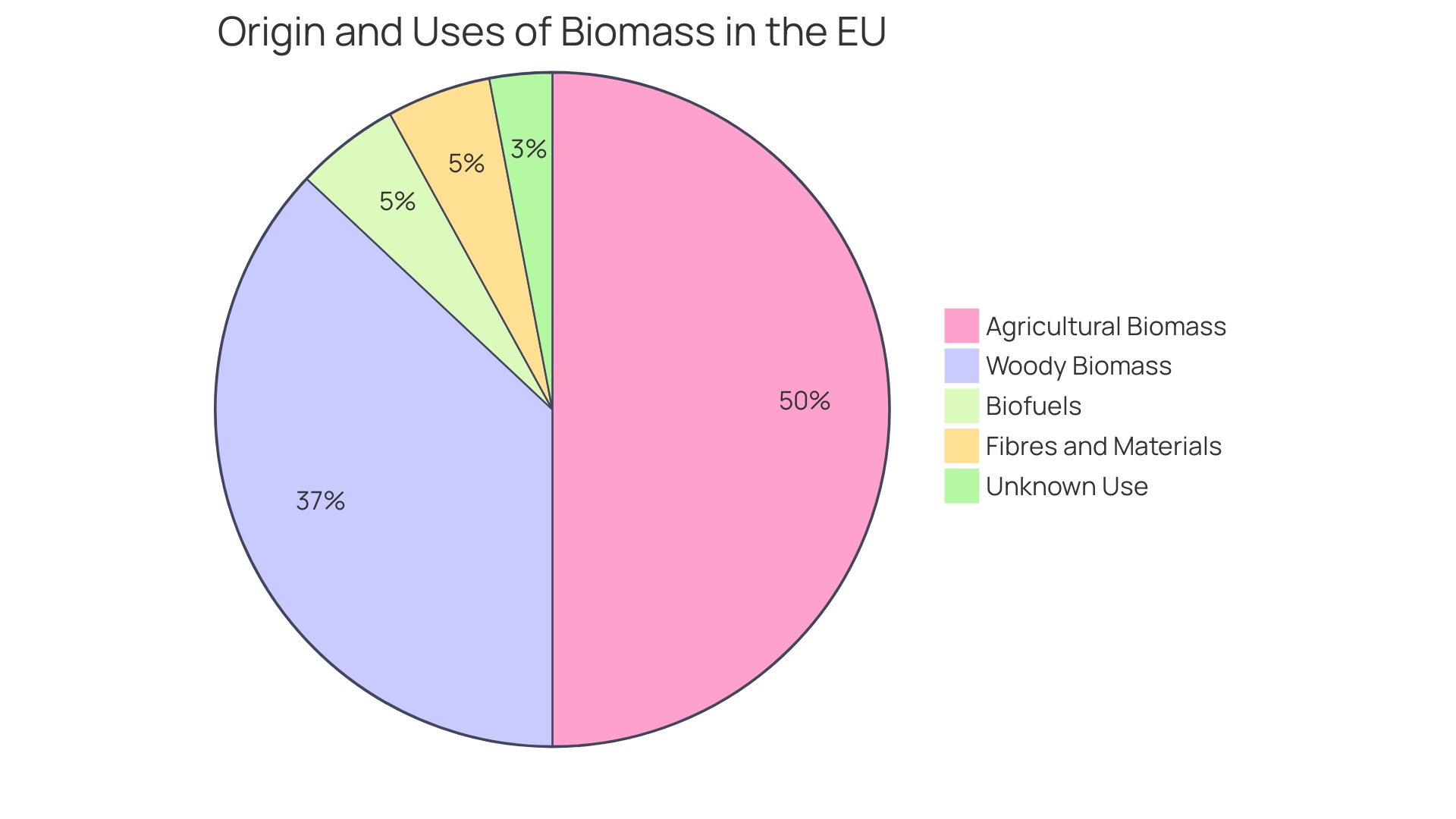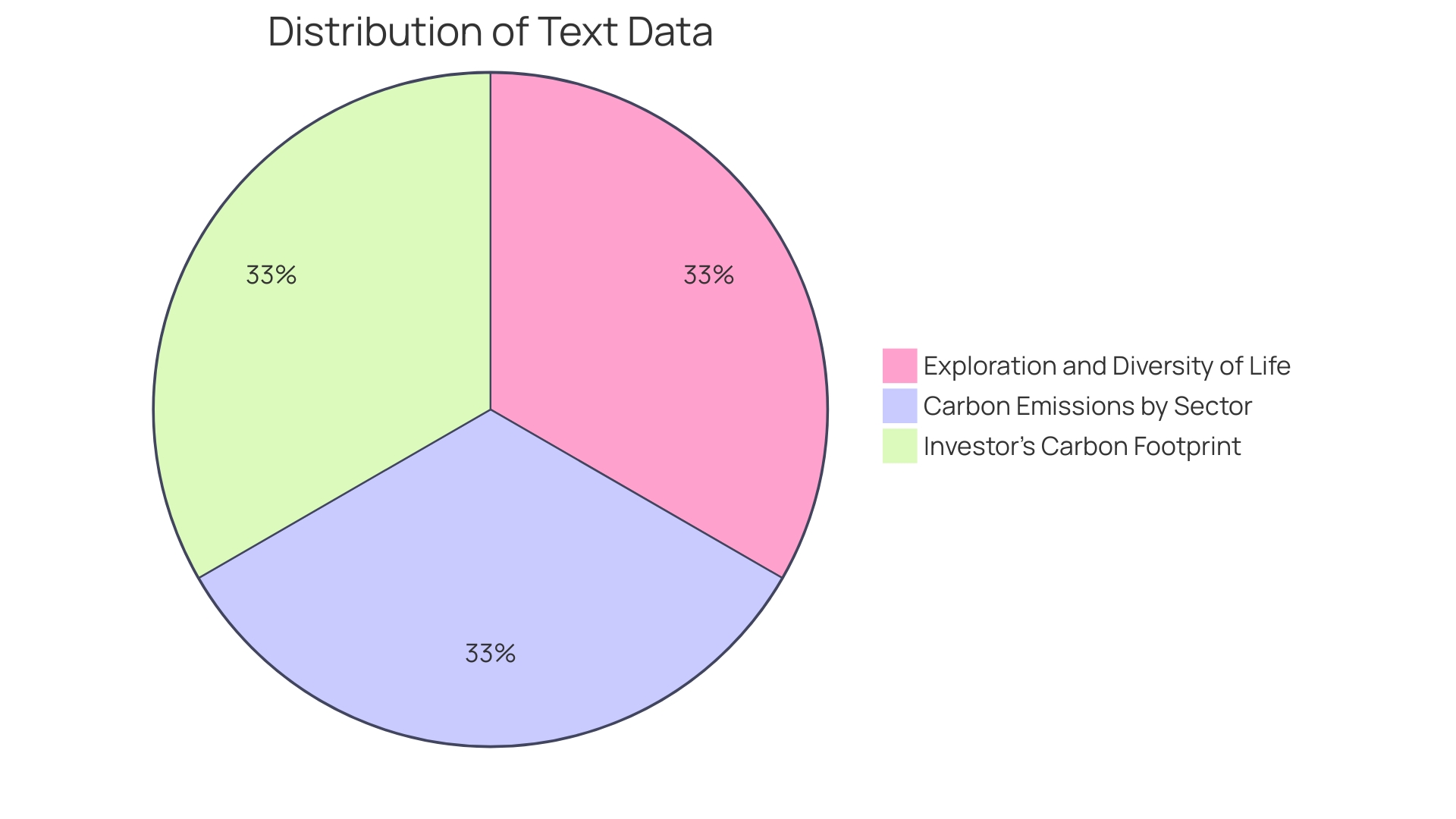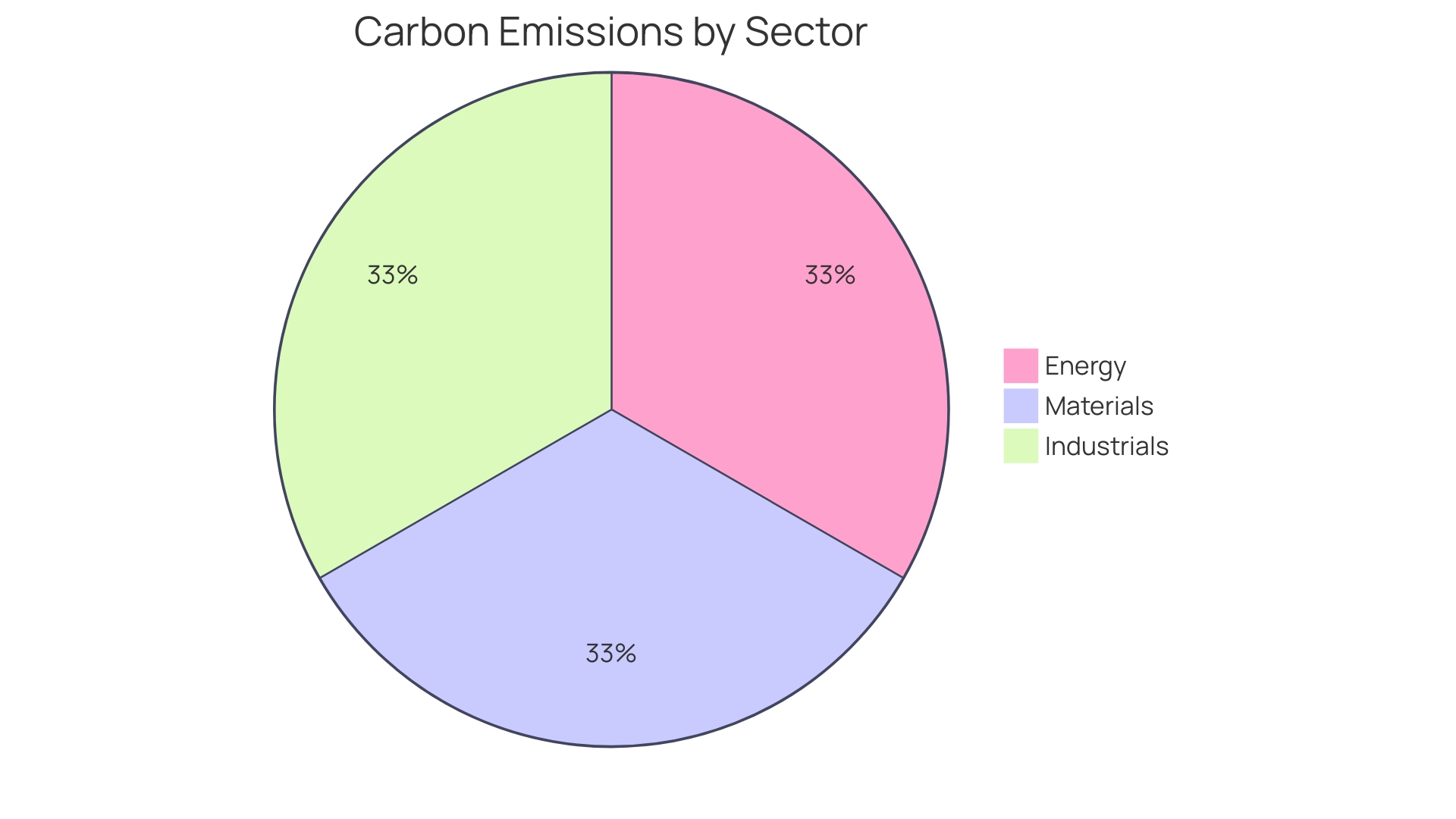Introduction
Biomass conversion is a crucial aspect of the renewable fuels industry, offering a sustainable alternative to fossil fuels and contributing to the reduction of greenhouse gas emissions. With biomass accounting for 50% of global renewable energy, it plays a significant role in the transition to a sustainable energy future. This article explores various types of biomass conversion processes, including thermochemical, biochemical, and chemical processes, and their benefits in terms of energy production and carbon reduction.
It also delves into the advancements in biomass catalytic conversion and the importance of understanding biomass's roles in relation to policies, ecosystems, and energy consumption. Furthermore, the article examines the environmental impacts of biomass conversion and mitigation strategies, as well as the technological advancements driving the effectiveness and scalability of biomass conversion. It discusses the economic viability of biomass conversion processes, public adoption, and the role of government policies and incentives.
Finally, the article highlights case studies of companies pioneering biomass conversion and their innovative approaches towards a sustainable future.
Types of Biomass Conversion Processes
Biomass is not only the world's predominant renewable energy source but also a vital player in reducing greenhouse gas emissions and transitioning to a sustainable energy future. It currently accounts for about 50% of global renewable energy, equivalent to the combined total of wind, solar, geothermal, and hydro, according to the International Energy Agency (IEA). In the European Union, biomass energy plays an even more significant role, making up 65% of the region's renewable energy structure and contributing 43% to carbon emission reduction.
The conversion of biomass into energy can be achieved through various processes, each with specific benefits. Thermochemical conversion involves heat to decompose organic material into different forms of energy, such as bio-oil or syngas. Biochemical processes, such as fermentation, convert biomass into ethanol, a sustainable fuel alternative, especially in aviation where industry groups are aiming for 10% sustainable aviation fuel by 2030. Lastly, chemical conversion leverages catalytic processes for the efficient transformation of biomass into valuable chemicals and fuels.
Expert research in biomass catalytic conversion is progressing rapidly, with a focus on designing advanced catalysts and understanding the mechanisms at play, from the micro to the macro scale. This research is critical for developing technologies to replace fossil fuels and decarbonize various sectors, including transportation. For instance, Hago Energetics' vision involves converting waste to clean hydrogen with a negative carbon footprint, targeting the transportation market with hydrogen fuel cell fleets.
Additionally, the European Environment Agency (EEA) has highlighted the importance of understanding biomass's numerous roles and functions in relation to EU policies, ecosystems, carbon sequestration, and energy consumption. With most of the EU's biomass produced domestically and used for various purposes, including animal feed and construction, awareness of biomass's sustainable supply is growing. This insight helps stakeholders navigate the complexities of the bioeconomy and supports strategic investments and scientific research for a cleaner future, as emphasized in reports by organizations like ORNL, which also contribute to national strategies for carbon dioxide removal and net-zero emissions goals.
Thermochemical Conversion Processes
Thermochemical processes, such as pyrolysis and gasification, are vital techniques in converting biomass into renewable energy sources. Pyrolysis operates under high temperatures and an oxygen-deprived environment, transforming organic material into bio-oil, biochar, and syngas—each with unique applications from soil amendment to energy production. Gasification, conversely, produces a synthesis gas (syngas) rich in carbon monoxide and hydrogen, which serves as a precursor for various biofuels.
These methods are not just theoretical but are being advanced by notable research and practical applications. For instance, the breakthroughs from BIOTERRAN, rooted in the research by Professor Andrzej Vogt at the University of Wroclaw, have showcased how biofuels can be integrated into existing energy systems. This integration supports the continuity of energy supply, particularly when compensating for the variability of solar and wind power.
In the backdrop of a climate crisis, with CO2 levels surpassing 400 ppm and fossil fuels dominating primary energy sources, the role of biomass as a sustainable alternative is increasingly recognized. Innovative companies are optimizing the use of non-food biomass, such as agricultural and forestry by-products, to create cleaner product streams, aligning with the growing international efforts to shift away from fossil feedstocks.
Supporting this shift, the IEA highlights the significance of biomass energy, constituting 50% of the world's renewable energy and contributing substantially to carbon emission reductions. In regions like the EU, biomass energy accounts for 65% of their renewable energy matrix, demonstrating its role in a more sustainable energy future.
Furthermore, advancements in catalytic processes for biomass conversion are critical. From the design of advanced catalysts to understanding catalytic mechanisms, these processes are increasingly efficient, offering higher-grade biofuels with longer shelf lives. The ongoing research aims to disseminate impactful findings promptly, accelerating the transition to renewable energy sources.
In light of these developments, the potential for biomass to serve as a green technology, particularly through pyrolysis-based methods, is gaining attention. The economics of hydrogen production from biomass through pyrolysis indicate a promising avenue for sustainable energy, showcasing the viability of this route compared to traditional fossil fuels.
As we strive for a circular economy, the move towards utilizing biomass for energy production is a step in the right direction, offering a path to reduce our reliance on fossil fuels and embrace renewable, carbon-neutral alternatives.
Biochemical Conversion Processes
Harnessing the capabilities of microorganisms and enzymes through biochemical conversion processes is a cornerstone in the production of biofuels from biomass. These processes utilize the natural efficiency of biological systems, such as fermentation where specific microorganisms digest sugars from biomass to produce ethanol, a renewable fuel that can be used for transportation. Another innovative method is anaerobic digestion, which employs bacteria to decompose organic matter without oxygen, resulting in biogas that is predominantly methane.
Innovations in the field, like Co-solvent Enhanced Lignocellulosic Fractionation (CELF), enable the upfront separation of the different components of lignocellulosic biomass. This allows for the simultaneous production of diverse bio-based products, improving economic viability and sustainability. Additionally, agro-industrial residues, which are abundant and low-cost by-products of the agricultural sector, present an untapped resource for the creation of value-added products. These residues contain considerable amounts of lignocellulosic biomass, which is a complex of cellulose, hemicellulose, and lignin. They can be transformed into a variety of industrial bioproducts, including animal feed, materials for the pulp and paper industry, and bioenergy sources like biochar, bio-oil, and syngas.
Moreover, the urgency to transition away from fossil fuels is underscored by their significant contribution to global CO2 emissions. Sustainable aviation fuel (SAF) has emerged as a particularly promising solution for hard-to-decarbonize sectors such as the airline industry, which seeks to meet ambitious targets for its incorporation into fuel mixes.
As the demand for innovative bioprocess technologies grows, driven by the need for cleaner production cycles and the reduction of CO2 emissions, advancements in this field are increasingly recognized for their potential to revolutionize the way we produce fuels and chemicals. The integration of technologies like ultrasound irradiation in the pre-treatment of agricultural residues is a testament to the ongoing efforts to optimize biofuel production processes. Such technological strides pave the way for more efficient and environmentally friendly solutions, aligning with the global movement towards a circular economy and a more sustainable living environment.
Chemical Conversion Processes
Catalysts and chemical reactions are critical in transforming biomass into bioenergy products, with biodiesel production being a prime example. Biodiesel originates from the transesterification of vegetable oils or animal fats, a process where triglycerides are converted into fatty acid methyl esters, serving as a renewable diesel alternative. The versatility of chemical conversion processes is evident in the myriad of possible end products, which is essential in advancing towards a climate-friendly future. This is corroborated by the European chemical industry's support for the EU's Green Deal, emphasizing the role of plastics and their efficient reincorporation into material cycles after their lifespan. While mechanical recycling of plastics is predominant, it is not a true cycle due to the degrading quality of recyclate. Chemical recycling, however, can break down plastics into their chemical constituents, allowing for the creation of new products. Methods like catalytic pyrolysis, gasification, and chemolysis showcase the variety of approaches within chemical recycling.
In the realm of biomass, materials such as corn stover represent an opportunity for more sustainable use of agricultural byproducts. As the chemical industry faces a critical juncture with growing demand and corresponding emissions, innovations like Solugen's enzyme-driven chemical production offer alternatives for cleaner processes. The impact of such advancements is significant, as illustrated by BIOTERRAN's technology from the University of Wroclaw, which integrates biofuels into various natural energy technologies. Furthermore, with over 80% of bio-based diesel derived from vegetable oil, the potential for biodiesel as a sustainable fuel is vast, given the compatibility with existing diesel infrastructure and regulatory support.
Environmental Impacts and Mitigation Strategies
Biomass conversion to renewable energy is a multifaceted process with significant potential to combat climate change by sequestering carbon and replacing fossil fuels. This organic matter, derived from plants and animals, such as wood, agricultural residues, and even manure, can provide a steady stream of material for energy production. Notably, agricultural by-products like corn stover—the non-edible parts of the corn plant—play a role in enhancing sustainability in crop use.
However, the production and conversion of biomass must be managed sustainably to avoid unintended consequences. For instance, using food crops like corn for biofuel can lead to a diversion of land and water resources away from food production, which is not ideal. Second-generation biofuel operations have begun to address this challenge by utilizing non-edible plant biomass as feedstocks. Such practices, including the use of forestry by-products and dedicated energy crops like poplar trees, sidestep the competition with food supply while providing low-cost and abundant raw materials.
To ensure a truly carbon-negative impact and to support the objectives of initiatives like the European Green Deal, it is essential to understand the balance between biomass production and consumption. With most of the EU's biomass supply produced internally, a significant portion is dedicated to non-food uses, such as biofuels and materials, indicating an evolving landscape of biomass utility. As discussions continue on the sustainable provision of biomass, it is crucial to leverage facts and analysis to navigate the complex interplay between ecosystems, carbon sequestration, and biomass utilization.

Technological Advancements in Biomass Conversion
Technological advancements are significantly enhancing the effectiveness and scalability of biomass conversion into energy. For instance, pretreatment methods are being refined to prepare biomass more efficiently for subsequent conversion processes. Catalysts, the agents that drive chemical reactions, are becoming more effective, leading to higher quality biofuels with improved yields. Additionally, optimizing the conversion processes through sophisticated tools is playing a pivotal role in streamlining operations and further improving outcomes.
Interestingly, the incorporation of sustainable energy sources like solar and wind into biomass processing plants is a leap forward in reducing the carbon footprint associated with biofuel production. This integration not only leverages the power of renewables but also aligns with global efforts to mitigate climate change. As biomass, which encompasses organic materials such as plant waste and animal residues, offers a renewable alternative to fossil fuels, these technological innovations are critical in bolstering the role of biomass as a sustainable energy solution. Moreover, projects like the one in Brognard, France, which involve producing green hydrogen from biomass, exemplify the potential of biomass to contribute to a circular and sustainable energy system.
With the growing interest in biomass as a tool for carbon dioxide removal and achieving net-zero emissions, it's essential to understand the scope of its impact. Biomass is not only a resource for energy production but also plays a role in carbon sequestration. The European Environment Agency (EEA) report highlights the need to assess biomass origins, flux, and the sustainable provision of biomass within the EU, emphasizing its importance in the context of the European Green Deal.
Ultimately, the fusion of these technological innovations and strategic use of biomass resources can lead to the development of local, circular economies. This approach is exemplified by Haffner Energy's HYNOCA® solution, which demonstrates how local biomass can be transformed into green hydrogen with a negative carbon footprint, showcasing a scalable model for green energy production.

Economic Viability and Public Adoption
The transition to sustainable energy sources is heavily influenced by the economic viability of biomass conversion processes. A myriad of factors plays a role, including the accessibility of feedstock, which encompasses a wide range of organic materials such as plant residues, wood, and even animal waste. For instance, corn stover, the remnants of corn plants after harvest, exemplifies a sustainable use of agricultural byproducts in biomass production.
Production costs of biomass-based biofuels are pivotal, with advances in technology, such as the Co-solvent Enhanced Lignocellulosic Fractionation (CELF) process, allowing for efficient breakdown of plant matter into valuable components, thus enhancing the commercial appeal of biofuel production.
Government policies and incentives are also critical, as seen in the EU's differentiation between 'advanced' and 'mature' biofuel uses, which influences market dynamics and investment in the sector. Furthermore, the evolving strategies, such as those proposed by German ministries that emphasize stringent sustainability criteria and favor residual and waste materials, underscore the importance of regulatory frameworks in shaping the biomass industry.
The demand for biofuels is set to rise alongside increasing public support for renewable energy. This trend is not only a reflection of societal preference but also aligns with the broader objectives of the European Green Deal, which seeks to balance biomass production with sustainable consumption, as highlighted by the European Environment Agency's report.
The current landscape of biomass utilization reveals that a significant portion of agricultural biomass is dedicated to animal feed, with lesser amounts allocated to human food and biofuel production. Woody biomass, on the other hand, finds its primary use in construction and furniture, with a fraction contributing to the energy sector.
As the renewable energy sector continues to evolve, comprehensive reports, like the Global Status Report (GSR), provide valuable insights into the disruptive forces of renewables, highlighting the exponential growth in cleantech investments and the consequent decline in fossil fuel demand, thereby drawing the goals of the Paris Agreement closer within reach.

Policy Incentives and Infrastructure Development
The dynamic field of biomass conversion is being shaped by government incentives and policies designed to promote sustainable energy solutions. These initiatives, ranging from tax breaks to grants, are propelling advancements in research and development as well as infrastructure expansion. A key element for the success of biomass as a renewable energy source is the establishment of strong supply chains. This involves the optimization of transportation and storage systems to ensure the effective implementation and usage of biomass conversion technologies.
Biomass, which encompasses organic matter from agricultural crops, trees, algae, and animal manure, is a versatile resource for energy production and biotechnological applications. Notably, lignocellulosic biomass can be converted into sugars, which are then used as precursors for bio-based chemicals and materials, demonstrating the potential of biomass beyond just energy production. Such innovations are crucial as we pivot towards a bioeconomy that hinges on sustainability and carbon neutrality.
Recent policy developments, such as the European Union's Renewable Energy Directive (RED), reflect the complexities involved in regulating the use of biomass. The RED sets new standards for forest biomass utilization, aiming to phase out subsidies for energy derived from certain types of forest wood and ensuring that biomass usage aligns with renewable energy goals. Meanwhile, nations like Canada are investing in biomass through actions like Ontario's Forest Biomass Action Plan to promote economic growth and sustainability.
As the conversation around biomass continues, it is clear that a multifaceted approach is needed. This includes understanding the trade-offs and co-benefits associated with its various uses, as emphasized by the European Environment Agency. With more than half of the EU's agricultural biomass allocated for animal feed and bedding, and a significant portion of woody biomass used for construction and furniture, the potential of biomass is vast. However, it also presents challenges, such as ensuring that its supply can meet the objectives of initiatives like the European Green Deal without compromising sustainability.

Case Studies: Companies Pioneering Biomass Conversion
Innovative companies are transforming the biomass industry by developing sustainable solutions that go beyond traditional energy production. These trailblazers are exploring the vast potential of biomass, a renewable resource derived from organic materials like wood, plant matter, and even animal manure. Such materials are instrumental in combating climate change by serving as carbon sinks or as alternatives to fossil fuels.
One such company, Hago Energetics, is making strides with a process that converts waste into clean hydrogen, boasting a negative carbon footprint. This approach not only addresses the urgent issue of global warming but also propels the transportation sector towards a greener future, especially hydrogen fuel cell fleets. Additionally, they are capitalizing on the benefits of biochar, a carbon-rich product that enhances soil productivity by retaining water and nutrients.
Experts with decades of experience in energy, forestry, and environmental sectors are leading the way. For example, Brian, with his extensive background in forestry and supply chain management, and Ric, a renewable energy policy expert, are contributing to the development of over 8GW of renewable power projects. Their combined expertise is vital in navigating the intricate landscape of biomass utilization and renewable energy.
Biomass is not just about energy; it's a versatile feedstock for a plethora of biotechnological applications. Lignocellulosic biomass, for instance, can be hydrolyzed into sugars to produce bio-based chemicals and materials, setting the stage for a diverse U.S. bioeconomy.
The European Environment Agency (EEA) elaborates on the multifaceted roles of biomass within the EU context, emphasizing the importance of understanding biomass's origins, uses, and its impact on ecosystems and carbon sequestration. This knowledge is crucial in achieving the objectives of the European Green Deal while ensuring sustainable biomass demand.
The Global Status Report (GSR) highlights renewable trends and the importance of integrating renewables into various sectors, acknowledging the economic and social benefits they bring. As we observe these successful enterprises and expert insights, we can draw inspiration and gain a deeper understanding of the role biomass conversion plays in creating a sustainable future.
Conclusion
In conclusion, biomass conversion is a crucial aspect of the renewable fuels industry, providing a sustainable alternative to fossil fuels and contributing to the reduction of greenhouse gas emissions. Thermochemical, biochemical, and chemical processes offer various methods for converting biomass into energy and valuable products. Advancements in biomass catalytic conversion and understanding biomass's roles in relation to policies, ecosystems, and energy consumption are driving the development of technologies to replace fossil fuels and decarbonize sectors such as transportation.
The environmental impacts of biomass conversion must be managed sustainably, taking into account the balance between biomass production and consumption. Utilizing non-edible plant biomass and agricultural by-products as feedstocks can enhance sustainability while avoiding competition with food supply. Technological advancements are improving the effectiveness and scalability of biomass conversion, optimizing processes and reducing the carbon footprint associated with biofuel production.
The economic viability of biomass conversion processes depends on factors such as feedstock accessibility and production costs. Government policies and incentives play a critical role in shaping the biomass industry, influencing market dynamics and investment. Public support for renewable energy is growing, aligning with the broader objectives of achieving a sustainable future.
Government incentives and policies are driving the development of biomass conversion, supporting research and development, and infrastructure expansion. Strong supply chains and optimized transportation and storage systems are essential for the effective implementation and usage of biomass conversion technologies.
Case studies of companies pioneering biomass conversion showcase innovative approaches that go beyond traditional energy production. These trailblazers are exploring the vast potential of biomass and developing sustainable solutions that address climate change and contribute to a greener future.
In summary, biomass conversion offers a sustainable solution to the energy transition, with various conversion processes and technological advancements driving its effectiveness and scalability. By managing biomass production sustainably, leveraging supportive policies, and embracing innovative approaches, we can harness the full potential of biomass to achieve a cleaner and more sustainable energy system.




